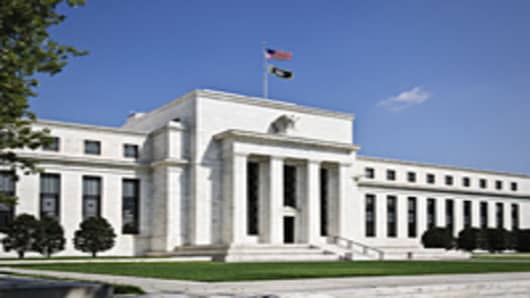Despite the tax-cut deal in Washington and better growth forecasts from economists, the bar is likely very high for the Federal Reserve to back off its plans to purchase $600 billion in bonds.
That's the best read of the statement the Federal Open Market Committee issued this week, which prompted strident criticism from Wall Street economists. Several said the Fed ignored the improving economic data and failed to mention the recent rise in bond yields.
But others saw the similarity of the statement to the November announcement as a signal that the Fed will stick to its plans to purchase the full complement of bonds.
The biggest effect of better growth likely is to reduce the chance of any additional bond purchases after the current round expires in June 2011. And strong improvement in the economic outlook could force the Fed to push harder on the brakes when the time comes to reverse policy.
Uncertainty has been high in bond markets since the feds QE2 policy was announced. Yields on the 10-year benchmark bond have risen nearly a full percentage points. Many traders and economists have complained that the Fed has given them no guideposts to determine if the policy will be fulfilled as advertised or what it will take to alter the purchase program.
QE2 will remain on track even while the Federal Reserve staff is likely raising its growth forecasts as well. The question is whether the staff will be as optimistic as the Street.
The debate in the markets is also echoed inside the Fed, with a discussion on whether rising bond yields is a reason for concern because it's an early sign of inflation or a reason for relief because the risk of deflation has eased.
Some FOMC members opposed to QE2 will clearly see the inflation risk, while the supports will claim success in beating back deflationary concerns.
Complicating the outlook is the change in the makeup of the voting members of the FOMC, which looks set to give the vote to more hawkish members next year. That raises the question of how much outright opposition there might be to qe2 next year, especially if the better growth outlook remains in tact.
To be sure, it is possible for the QE2 to be changed. In outtakes from the "60 Minutes" interview a few weeks ago, the Fed Chairman said, “We're going to be regularly reviewing this. This is not something that we've set into automatic motion going forward. We want to continue to think about it. Whether it needs to be changed. Whether it needs to be increased or decreased or modified."
But the Fed Chairman has not explained what it would take to change QE2. The best guess is that only a sharp change in the outlook for the unemployment rate—that is, that it will come down faster than forecast—or a true, sustained inflation scare, will halt QE2.


